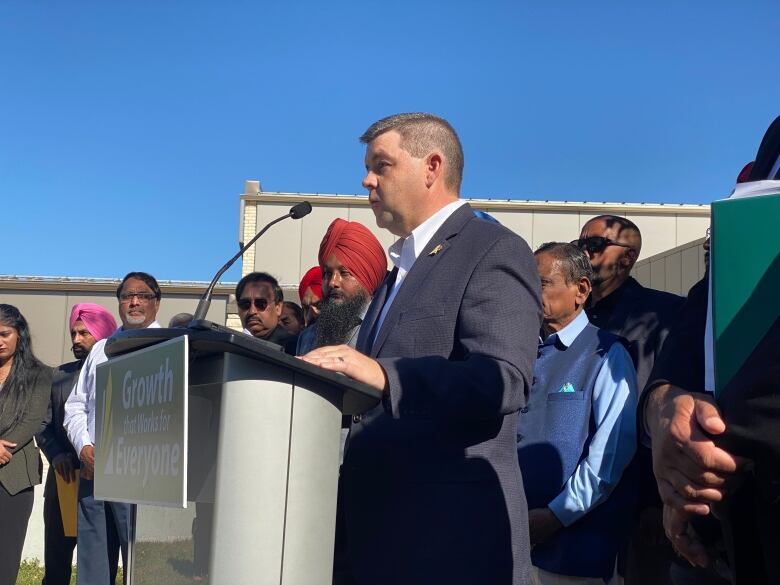Sask. inches closer to 1.2 million people after its largest ever 3-month population jump
Province's population up 1.1 per cent compared to same time last year

Saskatchewan's population grew by 6,465 people during the second quarter of 2022, the province'slargest jump in any three-month period since Statistics Canada started releasing quarterly population counts in 1971.
"It's the largest growth in numbers, but it's the second highest growth in per cent over the same period, following the third quarter of 1975," Stacey Hallman, an analyst at Statistics Canada, said.
There were 1,194,803 people living in Saskatchewan as of July 1, according to Statistics Canada.Canada's total population wasestimated at 38,929,902.
Compared to the same time last year, Saskatchewan saw an increase of 13,310 people, an annual growth rate of 1.1 per cent.
"Almost all of this growth has come from international migration. There's a very little bit of growth coming from natural increase, which means there are more births than deaths, but that has been trending down for some time now," Hallman said.
"The federal immigration department has increased their target numbers for immigrants. Additionally, post pandemic as borders open some catch up growth is happening."

International migration made up 94.5 per cent of Canada's populationgrowth in the second quarter.
MeanwhileSaskatchewan, along with Ontario and Manitoba, saw the highestlosses to interprovincial migration. From April 1 to July 1, 6,992 people moved from other provinces and territories to Saskatchewan mostly from Ontario, Alberta and B.C. but 8,940 people did the opposite, for a net loss of about 2,000 people,Hallman said.
She said displaced Ukrainian people also added to Saskatchewan's population increase.
"From Ukraine, as of a week ago, we had about 1,900 health cards issued, which would be a reflection of the number of Ukrainians who have relocated to Saskatchewan since the war," Jeremy Harrison,the province's immigration minister, told reporters Wednesday morning.
"We are nearing 1.2 million people, which shows that we have jobs in place which have attracted people from around the world."
Objective is 1.4 million by 2030: Harrison
When questioned about the loss of people to other provinces, Harrison said the focus should be onthe inflow of international immigrants. Harrison said the government will work on retainingpeople with policies around labour mobility and credential recognition.
"There are newcomers in Canada who are driving Ubers when they should be working in the health-care system, because their credentials aren't recognized," he said.

Harrison said the ongoing labour shortages mean employment opportunities for newcomers.
"To have gone from 1 million to nearly 1.2 million people is a very substantial gain," he said. "Our objective is to reach 1.4 million people by 2030."
Autonomy over immigration is the way to achieve the objective, Harrison noted.He said the province is in a "better position to do that."
"We have asked for more numbers for our provincial nominee program, as far as allocation from the federal government."
The provincial government said in August it expects to exceed its current cap of 6,000 under the provincial immigrant nominee program this year, and wantsto reach at least 13,000 peoplein 2022.
"Historically, we have welcomed more refugees per capita than what we would be allocated on the basis of our population."
Saskatoon-based immigration lawyerOmer Khayyamagreed, sayingthe growth has also been due to the influx of refugees. He added many choose Saskatchewan either for accessible education or gaining work experience.
"Many students will have a work permit. They'll come out here to get work experience. Then, they will get their permanent residence and then they're pretty quick to leave," he said, noting a lack of more favourable jobs adds to this.
'More needs to be done for employment post permanent residence': lawyer
Khayyam said increasing the immigrant nominee program cap to 13,000 would help, but it would not solve the retention problem.
"There should be an endpoint. People get their [permanent residence]but they can't find jobs. They get entry-level jobs," he said.
"More needs to be done for employment post permanent residence."

He said newcomers usually prioritize Ontario, Alberta and B.C. due to abundance of favourable jobs and Saskatchewan should aim for that.
"Those provinces really don't need that much immigration compared to their populations,as smaller provinces like Saskatchewan need. There should be some priority processing involved."












_(720p).jpg)


 OFFICIAL HD MUSIC VIDEO.jpg)
.jpg)



























































































